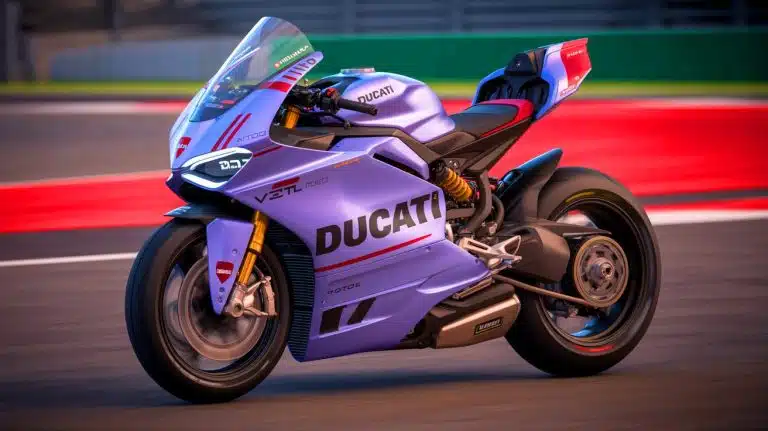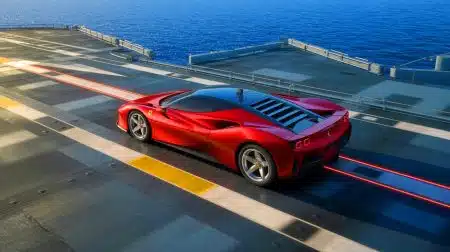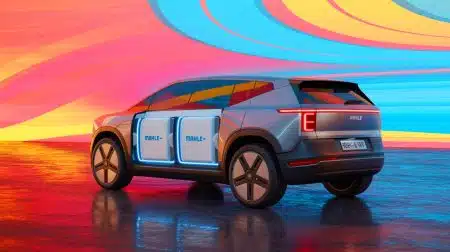| IN A NUTSHELL |
|
The IAA Mobility trade show in Munich recently showcased a groundbreaking development in the realm of electric vehicles. Ducati, a brand synonymous with high performance, introduced the V21L MotoE prototype. This motorcycle isn’t just another addition to the electric vehicle lineup; it marks a significant step forward with its incorporation of solid-state lithium-metal battery technology. Developed in collaboration with QuantumScape and PowerCo, the V21L aims to set a new standard for future electric offerings. This development is not just about speed and power; it represents a leap towards more efficient and sustainable battery technology.
The Technology Behind Solid-State Batteries
Solid-state batteries, unlike their conventional counterparts, use a solid electrolyte and a lithium-metal anode. This configuration replaces the liquid electrolytes and graphite anodes found in traditional lithium-ion batteries. The advantages are significant. Solid-state batteries offer enhanced safety due to their reduced risk of leakage and combustion. They also promise faster charging times and higher energy storage capacity per unit volume and weight. These characteristics make them an attractive option for high-performance applications such as racing motorcycles.
The V21L prototype embodies these advantages. It features a battery pack composed of 980 QuantumScape QSE-5 cells, each utilizing a lithium-metal anode and a ceramic separator. This setup replaces the standard 18-kWh battery pack, which typically uses 1,152 cylindrical 21700 cells. The result is a battery that can handle race-level power demands and charge from 10% to 80% in just over 12 minutes. This rapid charging capability is crucial for both racing scenarios and everyday use, where downtime needs to be minimized.
Partnerships and Collaborative Efforts
The development of the V21L prototype is a collaborative effort involving several industry leaders. Audi, Ducati, PowerCo, and QuantumScape have joined forces to bring this cutting-edge technology to life. QuantumScape, in particular, plays a pivotal role with its focus on commercializing solid-state batteries. The company's CEO, Siva Sivaram, emphasized the significance of this partnership, stating, "Today we’ve crossed the threshold from possibility to reality." This collaboration leverages the strengths of each company—Ducati's engineering prowess, QuantumScape's battery innovation, and PowerCo's production capabilities—to push the boundaries of what is possible in electric vehicle technology.
By choosing a motorcycle as the initial platform for their solid-state battery, these companies demonstrate a strategic approach. Motorcycles offer a simpler and safer platform for testing new technologies, providing valuable insights and data that can be applied to larger vehicles in the future. This methodical approach ensures that when solid-state batteries are introduced to the mainstream market, they will be both reliable and efficient.
Implications for the Electric Vehicle Market
The introduction of solid-state batteries in the V21L prototype has profound implications for the broader electric vehicle market. As the first instance of a QuantumScape solid-state battery powering an actual vehicle, this development paves the way for broader adoption of the technology. The potential for longer battery life cycles and enhanced performance makes solid-state batteries an attractive option for both manufacturers and consumers. This could lead to a shift in the automotive industry, where electric vehicles become not only more prevalent but also more efficient and sustainable.
Additionally, the focus on motorcycles as a testing ground highlights the potential for diversification within the electric vehicle sector. While the car market remains dominant, motorcycles represent a growing niche that could benefit significantly from advancements in battery technology. This diversification could stimulate innovation and competition, driving further advancements in electric vehicle technology.
Looking Ahead: Challenges and Opportunities
While the development of the V21L prototype is a significant achievement, challenges remain in scaling solid-state battery technology for mass production. Companies like Toyota and Honda have been working on similar technologies, indicating a competitive landscape. The transition from prototype to commercial product will require overcoming manufacturing hurdles and ensuring cost-effectiveness. However, the potential rewards are substantial.
With plans to develop a commercial version of the solid-state battery by the end of the decade, QuantumScape and PowerCo are poised to lead the charge. The question remains: will these advancements translate to widespread adoption in the near future? As the technology matures, the possibility of seeing solid-state batteries in mainstream vehicles, including cars and motorcycles, becomes increasingly likely.
The Ducati V21L prototype represents a promising step towards a future where electric vehicles are more efficient, powerful, and sustainable. As the technology continues to evolve, it raises important questions about the future of transportation. How will the widespread adoption of solid-state batteries reshape the automotive industry, and what new innovations will emerge as a result? The answers to these questions will shape the future of mobility, with implications for both manufacturers and consumers alike.
Did you like it? 4.3/5 (21)







This sounds revolutionary! When can we expect to see this tech in consumer motorcycles? 🏍️
Wow, 12 minutes to charge! Does this mean I can finally plan a long road trip on an electric motorcycle? 🏍️
Finally, a battery that charges faster than my phone. Impressive, Ducati! 🔋
Solid-state tech sounds amazing, but how long until it’s affordable for the average rider?